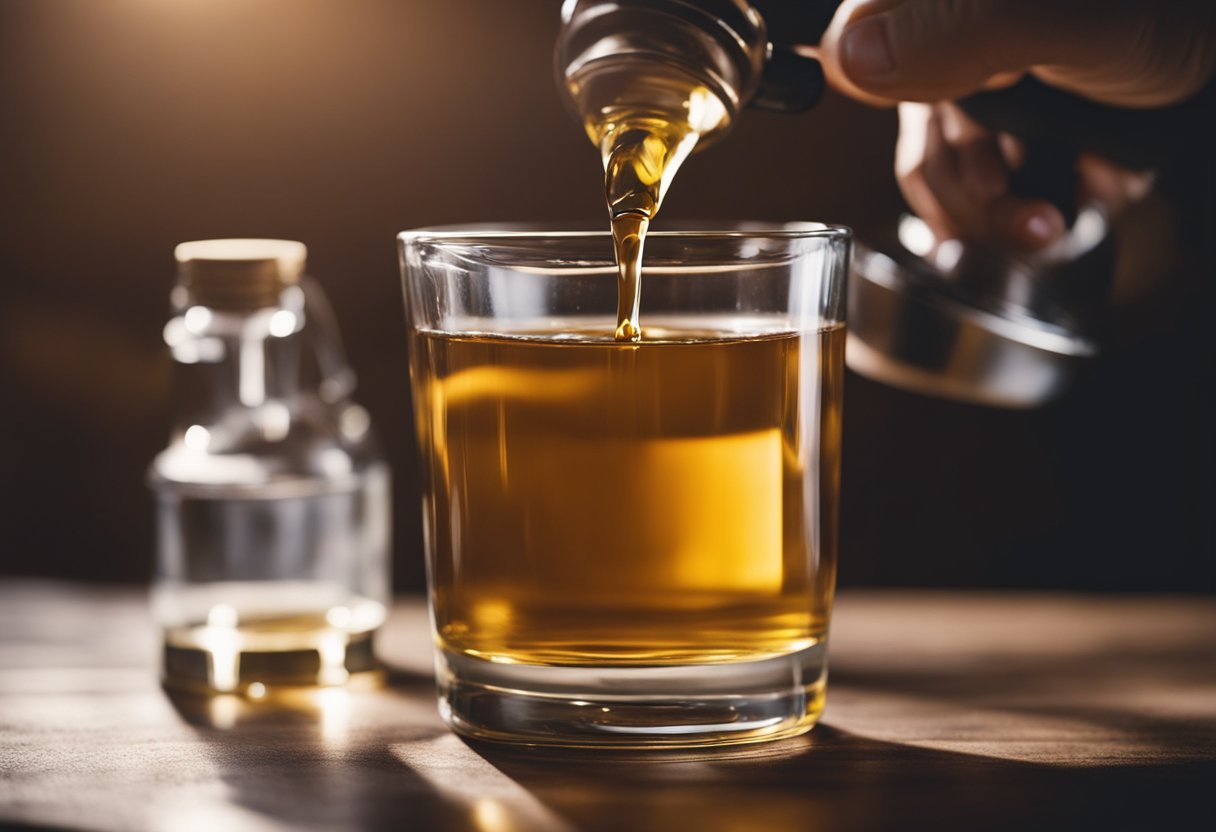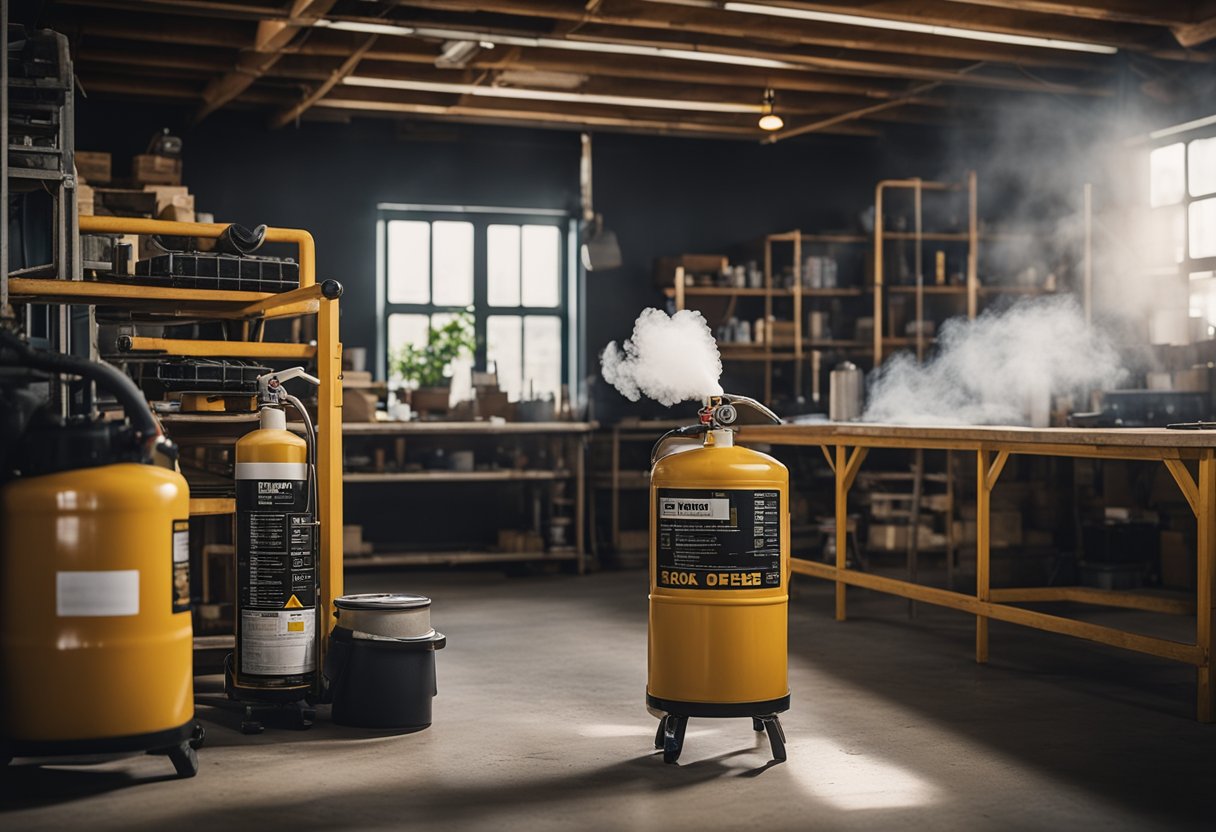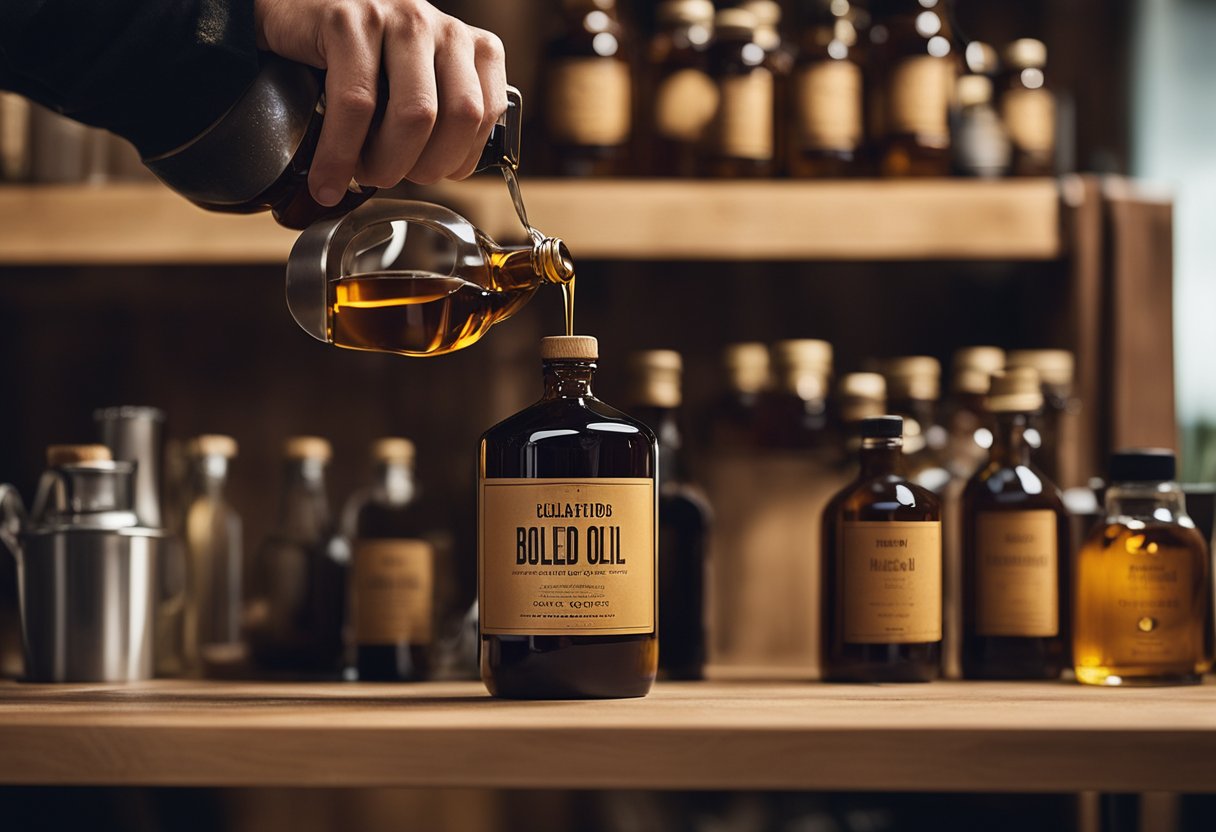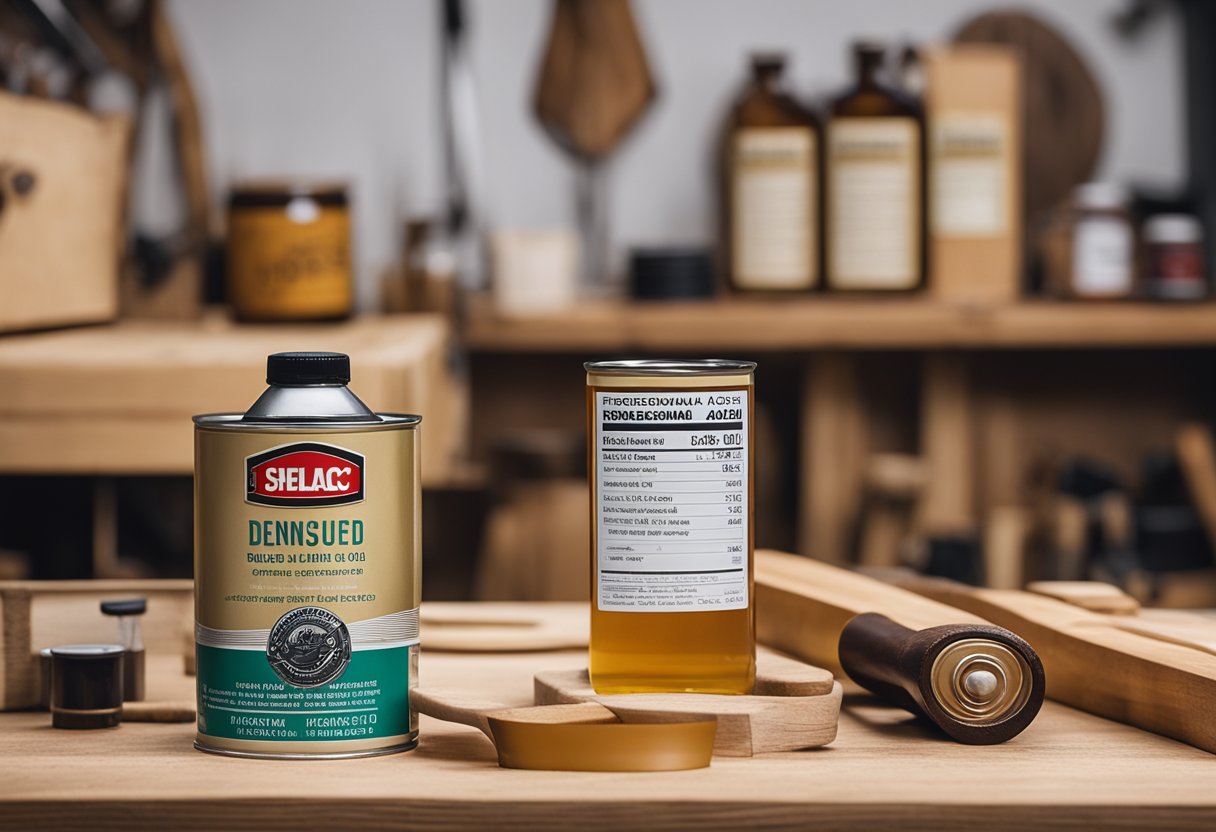I have been working with wood finishes for years, and one of my favorite combinations is shellac, boiled linseed oil, and denatured alcohol. This trio of ingredients provides a beautiful finish that is both durable and easy to apply. In this article, I will share my knowledge and experience with this finish and provide tips for mixing and applying it effectively.
Understanding shellac is key to mastering this finish. Shellac is a versatile natural resin that can be used on its own or mixed with other ingredients. It is made from the secretions of the lac bug and is dissolved in denatured alcohol. Shellac provides a beautiful, warm finish that enhances the natural beauty of wood.
Boiled linseed oil is a popular ingredient in many wood finishes, and for good reason. It is a natural oil that penetrates deeply into the wood, providing protection and enhancing the natural grain. When combined with shellac and denatured alcohol, boiled linseed oil helps to create a durable and long-lasting finish.
Understanding Shellac
https://www.youtube.com/watch?v=RQ-FEtA0TKU&embed=true
Shellac is a natural resin that comes from the secretions of the lac bug, a type of insect found in India and Thailand. The resin is collected by scraping it off the branches of trees where the insects reside. The resin is then processed into flakes, which are used to make shellac.
Shellac is available in different colors, ranging from light blonde to dark brown. The color of the shellac depends on the type of tree where the lac bug resides. The most common type of shellac used in woodworking is dewaxed shellac, which has had the wax removed to make it easier to work with.
Shellac is available in both flake form and as a premixed solution. Flake shellac is dissolved in denatured alcohol to create a solution that can be applied to wood. Premixed shellac is a solution of shellac flakes and denatured alcohol that is ready to use.
Shellac is a versatile finish that can be used on a variety of surfaces, including wood, metal, and plastic. It dries quickly and can be sanded and recoated in a short amount of time. Shellac is also resistant to water and alcohol, making it a good choice for use in high-moisture areas.
Overall, shellac is a reliable and easy-to-use finish that has been used for centuries in woodworking. Whether you’re a professional woodworker or a DIY enthusiast, shellac is a great choice for adding a beautiful, protective finish to your projects.
The Role of Boiled Linseed Oil
https://www.youtube.com/watch?v=GhGM93BtCKU&embed=true
Boiled Linseed Oil (BLO) is a popular wood finishing oil that can be used on its own or in combination with other finishes like shellac and denatured alcohol. BLO is made by heating raw linseed oil with certain metal compounds to speed up the drying process. This makes it harden faster than regular linseed oil, which can take several days to dry.
One of the main benefits of using BLO is that it penetrates deeply into the wood, providing long-lasting protection against moisture and wear. It also enhances the natural beauty of the wood by bringing out its grain and color. BLO is especially effective on porous woods like oak, walnut, and mahogany.
BLO can be used as a standalone finish, or it can be mixed with other oils and resins to create custom oil/varnish blends. For example, it can be mixed with Danish oil to create a hard, durable finish that is resistant to water and scratches. It can also be mixed with shellac to create a fast-drying, high-gloss finish that is ideal for furniture and other decorative items.
When using BLO, it’s important to apply it in thin, even coats and to allow each coat to dry completely before applying the next. It’s also important to use a lint-free cloth or brush to apply the oil, as fibers from regular cloths or brushes can get stuck in the finish. Additionally, it’s important to dispose of any rags or brushes properly, as they can spontaneously combust if left in a pile.
Overall, BLO is a versatile and effective wood finishing oil that can be used on its own or in combination with other finishes like shellac and denatured alcohol. Its ability to penetrate deeply into the wood and enhance its natural beauty make it a popular choice among woodworkers and DIY enthusiasts alike.
Utilizing Denatured Alcohol
As I mentioned earlier, denatured alcohol is an essential component of the shellac, boiled linseed oil, and denatured alcohol mixture. It is important to use denatured alcohol instead of regular alcohol because it contains additives that make it unsuitable for consumption, and therefore exempt from excise duty.
https://www.youtube.com/watch?v=Be5Zz3_AbhU&embed=true
Apart from being a key ingredient in this specific finish, denatured alcohol is also used in many other applications. For example, it can be used as a solvent for cleaning purposes, as a fuel for alcohol burners, and as a disinfectant.
It is important to note that denatured alcohol is not the same as ethanol, which is the type of alcohol found in alcoholic beverages. Ethanol is not suitable for use in this finish because it is too pure and will not dissolve the shellac flakes.
When working with denatured alcohol, it is important to take precautions to ensure your safety. Denatured alcohol is highly flammable and should be kept away from heat sources and open flames. It should also be used in a well-ventilated area to prevent inhalation of fumes.
If you are unable to find denatured alcohol, naphtha can be used as a substitute. However, it is important to note that naphtha is more toxic than denatured alcohol and should be used with caution.
Overall, denatured alcohol is a crucial component of the shellac, boiled linseed oil, and denatured alcohol mixture. It is important to use it correctly and safely to achieve the best results.
Mixing and Application Techniques
https://www.youtube.com/watch?v=pxc4juKGcTw&embed=true
Mixing shellac, boiled linseed oil, and denatured alcohol is a simple process. The ratio of each component can vary depending on the desired finish. For a quick and easy finish, I recommend mixing equal parts of shellac, boiled linseed oil, and denatured alcohol. This mixture can be applied with a cloth or brush.
Before applying the finish, it is important to sand the surface to be finished. I typically start with a coarse grit sandpaper and work my way up to a fine grit. This ensures that the surface is smooth and free of imperfections.
To apply the finish, I use a technique called padding lacquer, also known as French polishing. This involves applying the finish with a pad made of cotton or wool. The pad is soaked in the finish and then rubbed onto the surface in a circular motion. This technique ensures an even and smooth application.
After applying the finish, it is important to let it dry completely before applying a topcoat. The drying time can vary depending on the temperature and humidity of the environment. I typically let the finish dry overnight before applying a topcoat.
Overall, mixing shellac, boiled linseed oil, and denatured alcohol is a simple and effective way to achieve a beautiful finish on any woodworking project. With the right techniques and tools, anyone can achieve a smooth and professional finish.
Durability and Protection
https://www.youtube.com/watch?v=cFN7H6vPDCE&embed=true
When it comes to finishing wood surfaces, durability and protection are two of the most important factors to consider. The combination of shellac, boiled linseed oil, and denatured alcohol is an excellent choice for achieving both.
Shellac is a natural resin that provides a hard, protective layer on the surface of the wood. It is resistant to water, alcohol, and most household chemicals. Boiled linseed oil is a natural oil that penetrates deep into the wood fibers, providing a durable, moisture-resistant finish. Denatured alcohol is a solvent that thins the shellac and boiled linseed oil, making them easier to apply.
Together, these three ingredients create a finish that is both durable and protective. The shellac provides a hard, glossy surface that resists scratches and wear, while the boiled linseed oil adds moisture resistance and durability. The denatured alcohol thins the mixture, making it easier to apply and ensuring that it penetrates deep into the wood fibers.
Unlike other finishes, such as wax or polyurethane, this combination of shellac, boiled linseed oil, and denatured alcohol is heat resistant. It can withstand high temperatures without cracking or peeling, making it an excellent choice for use on items such as cutting boards or trivets.
Overall, if you’re looking for a finish that provides both durability and protection, the combination of shellac, boiled linseed oil, and denatured alcohol is an excellent choice.
Aesthetic Aspects
When it comes to aesthetics, the combination of shellac, boiled linseed oil, and denatured alcohol can produce a beautiful finish on wood. The finish can enhance the natural color and grain of the wood, giving it a warm and inviting look.
The color of the finish can vary depending on the type of wood used. For example, cherry wood can take on a reddish hue when finished with this combination. The grain of the wood can also be emphasized, giving it a more natural and organic look.
The sheen of the finish can be adjusted by using different ratios of the ingredients. More shellac will give a higher gloss finish, while more boiled linseed oil will produce a more matte finish. The finish can also be buffed to increase the sheen.
The finish can also help to fill in the pores of the wood, giving it a smoother and more polished appearance. This can be especially beneficial for open-grained woods such as oak.
Overall, the combination of shellac, boiled linseed oil, and denatured alcohol can produce a beautiful and natural-looking finish on wood. With the right application technique and attention to detail, it can enhance the natural beauty of the wood and give it a warm and inviting look.
Troubleshooting and Repair
If you encounter any issues with the shellac, boiled linseed oil, and denatured alcohol finish, there are several ways to troubleshoot and repair the problem.
Repairs
If you need to repair scratches or other damage to the finish, you can use steel wool to gently remove the damaged area. Be sure to use a fine grade of steel wool, such as 0000, to avoid creating additional scratches. Once the damaged area has been removed, you can reapply the finish to restore the appearance of the wood.
Stripping
If you need to remove the finish entirely, you can use denatured alcohol to dissolve the shellac. Apply the alcohol to the surface of the wood and wait for the finish to soften. Then, use a scraper or steel wool to remove the finish. Be sure to work in a well-ventilated area and wear gloves to protect your skin.
Troubleshooting
If the shellac is drying too quickly, it may be due to the humidity in your workspace. Try adding a small amount of denatured alcohol to the mixture to slow down the drying time. If the finish is still drying too quickly, you may need to adjust the ratio of shellac to boiled linseed oil.
If the finish is too sticky, it may be due to the humidity in your workspace or the type of wood you are working with. Try moving the piece to a drier location or applying a thin layer of wax to the surface of the finish to reduce the stickiness.
In conclusion, troubleshooting and repairing issues with a shellac, boiled linseed oil, and denatured alcohol finish is relatively straightforward. By following these tips, you can ensure that your finished piece looks beautiful and lasts for years to come.
Health and Safety Measures
When working with shellac, boiled linseed oil, and denatured alcohol, it is important to take certain health and safety measures to avoid any potential hazards. Here are some tips to keep in mind:
Non-Toxic Alternatives
First and foremost, it is important to note that shellac, boiled linseed oil, and denatured alcohol are all potentially toxic substances. While they are commonly used in woodworking and furniture restoration, it is important to consider non-toxic alternatives whenever possible. For example, there are many natural oils and waxes that can be used as finishes instead of shellac and boiled linseed oil.
Rags
When using boiled linseed oil, it is important to be aware of the potential fire hazard posed by rags. Boiled linseed oil can generate heat as it dries, and if rags are not disposed of properly, they can spontaneously combust. To avoid this risk, always dispose of used rags in a metal container with a tight-fitting lid.
Dust and Dirt
When sanding and working with wood, it is important to be aware of the potential hazards posed by dust and dirt. Dust and dirt can irritate the eyes, nose, and throat, and can also cause respiratory problems. To avoid these risks, always wear a dust mask and protective eyewear when sanding and working with wood.
Conclusion
By following these health and safety measures, you can minimize the risks associated with working with shellac, boiled linseed oil, and denatured alcohol. While these substances can be hazardous if not handled properly, with the right precautions, you can safely use them to achieve beautiful, long-lasting finishes on your woodworking projects.
Purchasing and Storage Tips
When purchasing shellac, boiled linseed oil, and denatured alcohol, it is important to choose high-quality products. Look for reputable brands that are known for producing quality finishes. It is also important to check the expiration date on the product to ensure that it is fresh and has not expired.
When it comes to storage, it is important to keep these products in a cool, dry place away from direct sunlight. This will help to extend their shelf life and ensure that they remain fresh for longer periods of time. It is also important to keep these products tightly sealed when not in use to prevent evaporation and contamination.
Boiled linseed oil should be stored in a metal container to prevent it from reacting with plastic. It is also important to note that boiled linseed oil can become rancid over time, so it is important to use it within a reasonable amount of time.
Denatured alcohol should be stored in a well-ventilated area away from any sources of heat or flame. It is also important to keep it away from children and pets as it can be toxic if ingested.
When purchasing these products, it is important to note that they are typically sold in gallon-sized containers. If you only need a small amount for your project, consider purchasing smaller sizes or look for pre-mixed solutions that are available in spray cans or smaller bottles. This will help to reduce waste and save you money in the long run.
Frequently Asked Questions
How do you mix shellac and denatured alcohol?
To mix shellac and denatured alcohol, I recommend using a 2-pound cut of shellac flakes to one gallon of denatured alcohol. This mixture will provide a good balance of solubility and film-forming properties. You can adjust the cut to your liking by adding more flakes for a thicker finish or more alcohol for a thinner finish.
What is the best solvent for shellac?
The best solvent for shellac is denatured alcohol. It is a clear, colorless liquid that evaporates quickly, making it ideal for use in shellac finishes. It is also readily available at most hardware stores and is relatively inexpensive.
Can you mix boiled linseed oil with shellac?
Yes, you can mix boiled linseed oil with shellac. This combination provides a beautiful, warm finish that enhances the natural beauty of the wood. To make the finish, mix equal parts of shellac, boiled linseed oil, and denatured alcohol. This mixture will provide a low-build, “in the wood” type of look.
What are the pros and cons of boiled linseed oil?
Boiled linseed oil is a popular wood finish that provides a warm, natural look. It is easy to apply and provides a durable finish that can protect the wood from moisture and other environmental factors. However, boiled linseed oil can take a long time to dry and can be flammable when wet. Additionally, it can darken over time and may require periodic reapplication.
Will denatured alcohol dissolve shellac?
Yes, denatured alcohol will dissolve shellac. This makes it an ideal solvent for shellac finishes. However, it is important to note that shellac will only dissolve in denatured alcohol that has not been denatured with methanol, as methanol can cause the shellac to coagulate.
What are the different shellac finish colors?
Shellac finishes come in a variety of colors, ranging from clear to amber to dark brown. The color of the finish is determined by the color of the shellac flakes used to make the finish. Clear shellac is made from bleached flakes, while amber and darker finishes are made from unbleached flakes.

Hi, I’m Sal Muller of Tooltrip.com. My DIY experience led me to understand essential power tools for home projects. Tooltrip.com guides enthusiasts and professionals in choosing right tools for any job. I provide concise top tool reviews for easier, efficient DIY.







